8 Species of Woodpecker in North Carolina (With Pictures)
Last Updated on
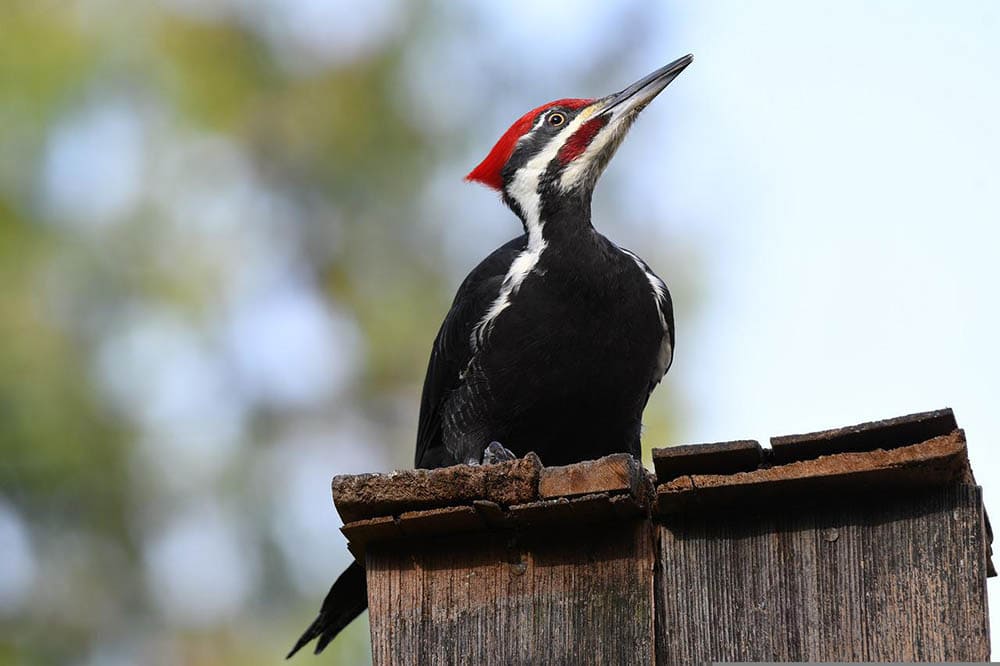
From the mountains to the coastal plains, North Carolina is home to several woodpeckers. You’ll see some species gobbling up food at backyard feeders, but others require you to venture into the woods. Red-bellied woodpeckers stay in the state all year, but the yellow-bellied sapsuckers and northern flickers are only in North Carolina during the winter.
We’ll examine North Carolina’s woodpeckers and highlight what makes each bird unique.

The 8 Species of Woodpecker in North Carolina
1. Downy Woodpecker

| Wingspan: | 9.8–11.8 inches |
| Weight: | 0.7–1.0 ounce |
| Length: | 5.5–6.7 ounces |
The downy woodpecker lives in most regions in the continental United States, but it avoids the desert areas of the southwest. It’s the smallest woodpecker you’ll see in North Carolina or anywhere in North America, but its size and dexterity allow it to access small branches and other fragile perches that are too unstable for larger birds. The bird has attractive white and black feathers, and males have a small red patch on their heads.
The downy prefers deciduous forests but also makes homes in parks and suburban backyards. It feeds on beetles, ants, gall wasps, caterpillars, berries, and seeds in the forest, but at backyard feeders, the bird’s favorite meal is suet. In the winter, it often forages for food with other species like the nuthatch and chickadee.
2. Hairy Woodpecker
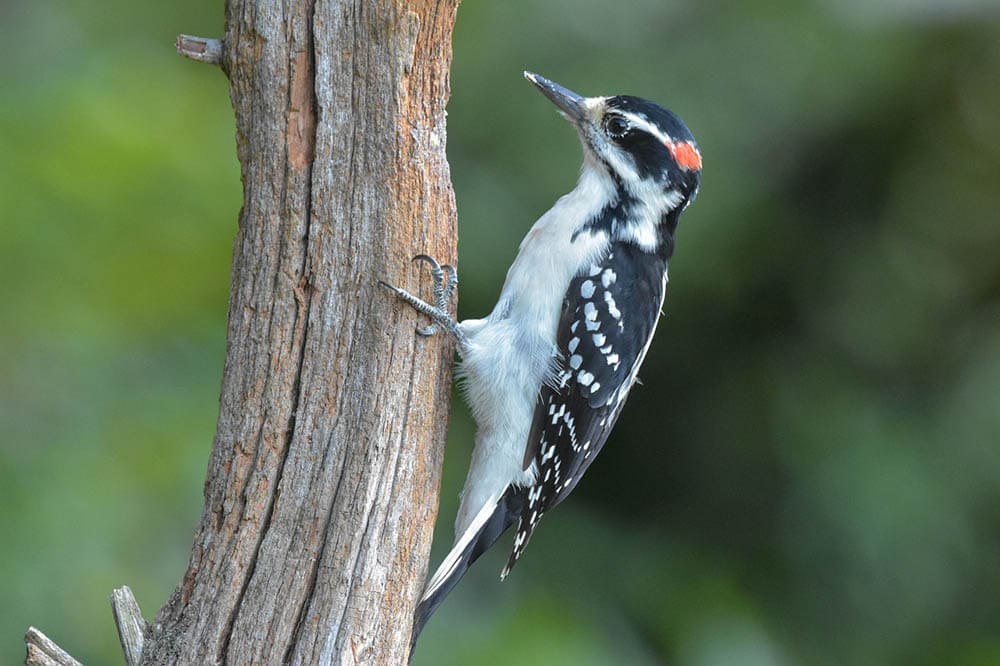
| Wingspan: | 13–16.1 inches |
| Weight: | 1.4–3.4 ounces |
| Length: | 7.1–10.2 inches |
Although it has a similar appearance as the downy woodpecker, the hairy woodpecker is much larger with a larger bill, and you’re less likely to see the hairy species at backyard feeders. The bird typically searches for food in woodland areas with tall trees, and its diet includes caterpillars, wood-boring beetles, ants, seeds, nuts, and fruit. In North Carolina, the bird prefers the deciduous forests in the western mountain regions and coniferous forests in the east.
When hairy woodpeckers abandon their nest sites, house sparrows and starlings often take them over and build new nests. Although they rarely visit backyards, hairy woodpeckers sometimes eat black oil sunflower seeds from feeders.
3. Northern Flicker
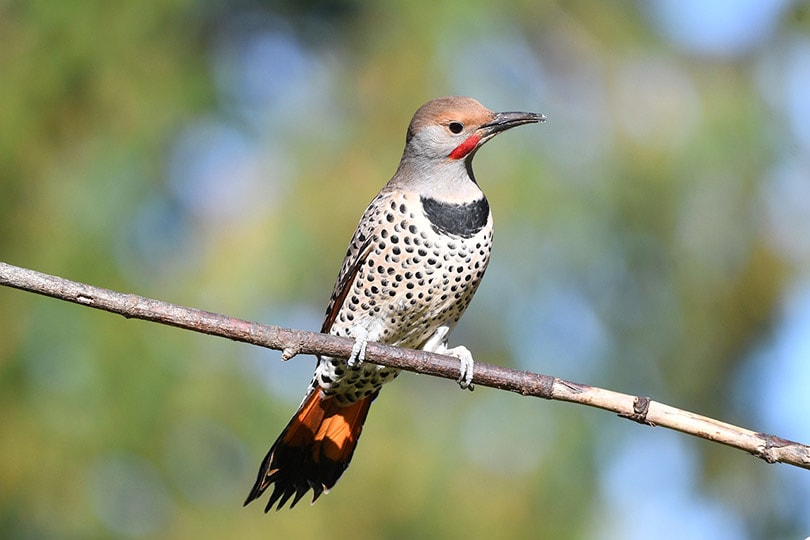
| Wingspan: | 16.5–20.1 inches |
| Weight: | 3.9–5.6 ounces |
| Length: | 11.0–12.2 inches |
If you spot a northern flicker in North Carolina, the bird will look slightly different from the western states’ variety. The yellow-shafted flickers of the east have yellow flight-feather shafts, tan faces, gray heads, and a red splash on the nape. The western flickers have red flight feathers, gray faces, and no red on the nape. Flickers live in backyards, parks, and woodlands. Unlike other woodpeckers, the flicker often forages on the ground for fruits, ants, and berries and catches flying insects in warmer months. Compared to other birds in North America, flickers consume more ants.
4. Pileated Woodpecker

| Wingspan: | 26.0–29.5 inches |
| Weight: | 8.8–12.3 ounces |
| Length: | 15.8–19.3 inches |
When the ivory-bill woodpecker lived in the eastern states, it was the largest woodpecker, but the species is thought to be extinct. The pileated woodpecker now holds the largest woodpecker record in North Carolina, and its numbers have rebounded after a sharp decline in the 19th century. With its black and white plumage and trademark red plume on its head, the pileated woodpecker inspired the creation of Woody the Woodpecker.
The drumming from its massive bill echoes through the forest, but the pileated woodpecker has also adapted to living near parks and cities. Over 60% of the pileated bird’s diet is carpenter ants, and they make deep holes in fallen branches when searching for the insects. They also eat nuts, fruit, and wood-boring beetles.
5. Red-Bellied Woodpecker
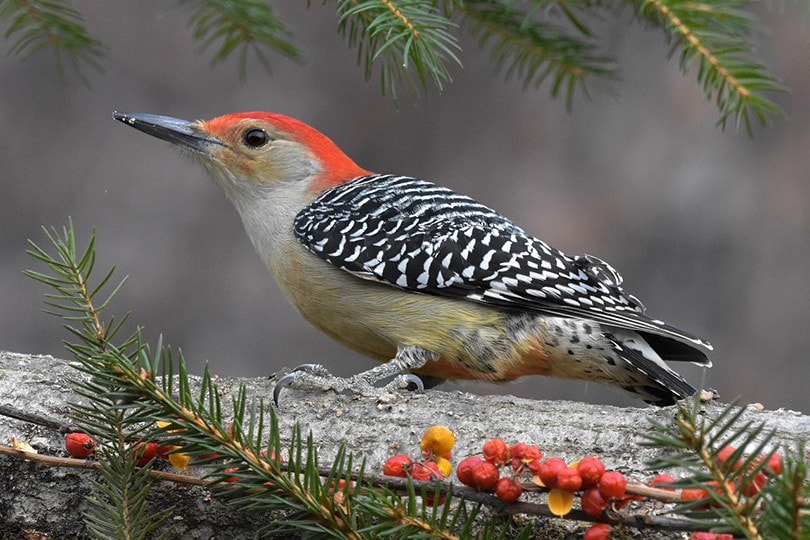
| Wingspan: | 13.0–16.5 inches |
| Weight: | 2.0–3.2 ounces |
| Length: | 2.0–3.2 inches |
The red-bellied woodpecker is common at backyard feeders in North Carolina and other eastern states. A century ago, the woodpecker’s range was shrinking, but it’s extended its range north into Canada in recent years. The bird has a black and white striped back, light orange and white breast, and a red nape and head. It often alternates between chirping and drumming into bark when it searches for food. Red-bellied woodpeckers make habitats in woodlands, swamps, near rivers, and towns.
Most of its daily meals consist of plant material like nuts, fruits, and seeds, but the bird is also known to eat small fish, bird eggs, and tree frogs. The woodpecker usually builds a nest that’s 50 feet above the ground, but some birds can have nests as high as 120 feet.
6. Red-Cockaded Woodpecker

| Wingspan: | 14.2 inches |
| Weight: | 1.5–1.8 ounces |
| Length: | 7.9–9.1 inches |
Red-cockaded woodpeckers are more social than other species in their family, and they often forage for food in small groups and help other families care for the young. When it builds a nest or roosting site in the cavity of pine trees, the red-cockaded woodpecker frequently pecks at the bark around the area to keep a steady supply of sap dripping nearby. The bird’s name is misleading because only males have a small spot of red on their upper cheeks.
Unfortunately, deforestation has reduced the bird’s preferred nesting sites in pine forests, and it’s now considered an endangered species with a population of under 10,000 birds. Your best chance of seeing the red-cockaded woodpecker in North Carolina is in the eastern pine forests of the Coastal Plains.
7. Red-Headed Woodpecker
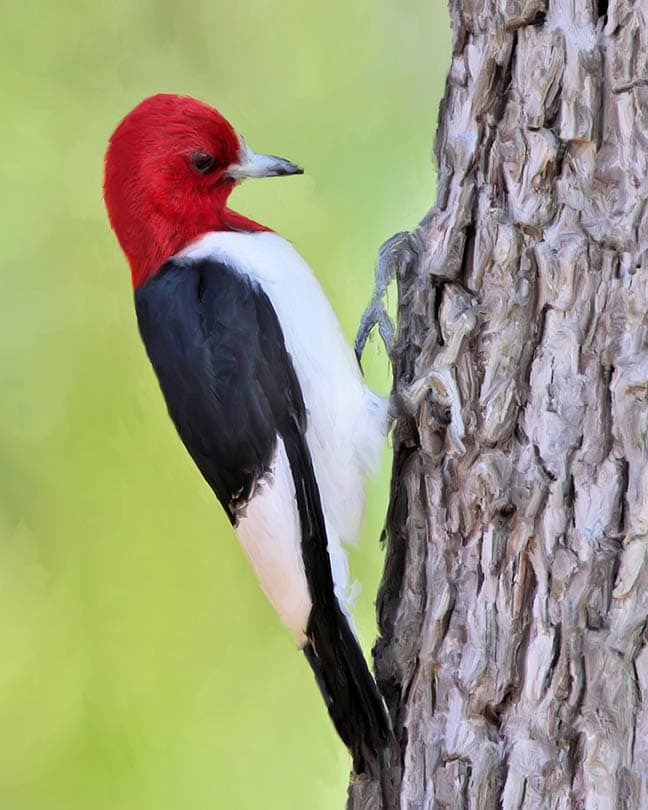
| Wingspan: | 16.5 inches |
| Weight: | 2.0–3.2 ounces |
| Length: | 7.5–9.1 inches |
Birdwatchers and ornithologists admire the red-headed woodpecker for its striking appearance, loud calls, and social nature. Although they were once common in the eastern regions of the United States, the bird’s numbers are declining. The cause is unclear, but some researchers suspect that removing deadwood in forests has minimized their nesting sites. The red-headed woodpecker is sometimes described as a “flying checkerboard” because it has black and white plumage and a brilliant red head and face.
Its diet consists of acorns, seed, corn, pecans, and fruit, and in the winter, it visits backyard feeders. The red-headed woodpecker hides its food in small cracks in wood, in fence posts, under bark, and roof shingles. Occasionally, the bird will stuff a live grasshopper into a tiny crevice that it cannot escape. It’s only one of four woodpeckers on the continent that hides food and keeps it covered.
8. Yellow-Bellied Sapsucker

| Wingspan: | 13.4–15.8 inches |
| Weight: | 1.5–1.9 ounces |
| Length: | 7.1–8.7 inches |
If you have maple or birch trees in your yard, you may witness a yellow-bellied sapsucker drilling a hole for sap or drumming on the bark to announce its territory. The red-headed bird has a white and black-striped face, black and white feathers, and a speckled cream and black breast. Its powerful beak can drill deep into the tree’s trunk to extract sap, insects, and cambium. Hummingbirds often visit the sap wells, and in Canada, the ruby-throated hummingbird times its migration with the yellow-bellied sapsucker’s arrival.
One of the woodpecker’s most unusual characteristics is its tendency to practice territorial drumming on metal objects like stop signs and chimney flashing. Some birds return to the sites every day and do not seem phased by the metal’s hardness.
A Woodpecker from the Past: The Ivory-Billed Woodpecker
Sadly, the ivory-billed woodpecker is thought to be extinct. It was native to the southeastern United States and Cuba, and the bird was once the third-largest woodpecker in the world. In the early 19th century, the birds’ habitats were destroyed when old-growth forests were cleared. Although the ivory-billed woodpecker disappeared from most regions in the 20th century, a few birds were spotted in Arkansas in 2004. However, no sightings of the bird have been reported since that date.

Feeding Suggestions for Woodpeckers in North Carolina
Although some species are hesitant to eat from backyard feeders, you can encourage more woodpeckers to visit your home by filling a feeder with black oil sunflower seeds and hanging peanut-butter suet. Pine, birch, oak, and maple trees will also attract the birds to your yard, and some birds may even make nests if you have tall trees.

In Conclusion
North Carolina residents are lucky to live by so many exceptional woodpeckers. They’re fascinating to watch when they drum on trees and cry out to announce their territories. Woodpeckers also perform valuable services in your backyard by reducing the insect population. Unfortunately, species like the red-cockaded woodpecker and red-headed woodpecker may not be in North Carolina much longer. Their numbers are declining, and they may meet the same fate as the ivory-billed woodpecker.
Featured Image Credit: Veronika_Andrews, Pixabay
About the Author Robert Sparks
Robert’s obsession with all things optical started early in life, when his optician father would bring home prototypes for Robert to play with. Nowadays, Robert is dedicated to helping others find the right optics for their needs. His hobbies include astronomy, astrophysics, and model building. Originally from Newark, NJ, he resides in Santa Fe, New Mexico, where the nighttime skies are filled with glittering stars.
Related Articles:
Monocular vs Telescope: Differences Explained (With Pictures)
10 Types of Hummingbirds in Arkansas (With Pictures)
8 Types of Hummingbirds in Nebraska (With Pictures)
5 Types of Hummingbirds in Idaho (With Pictures)
3 Types of Hummingbirds in Mississippi (With Pictures)
8 Types of Hummingbirds in Kansas (With Pictures)
5 Types of Hummingbirds in West Virginia (With Pictures)
5 Types of Hummingbirds in Ohio (With Pictures)
